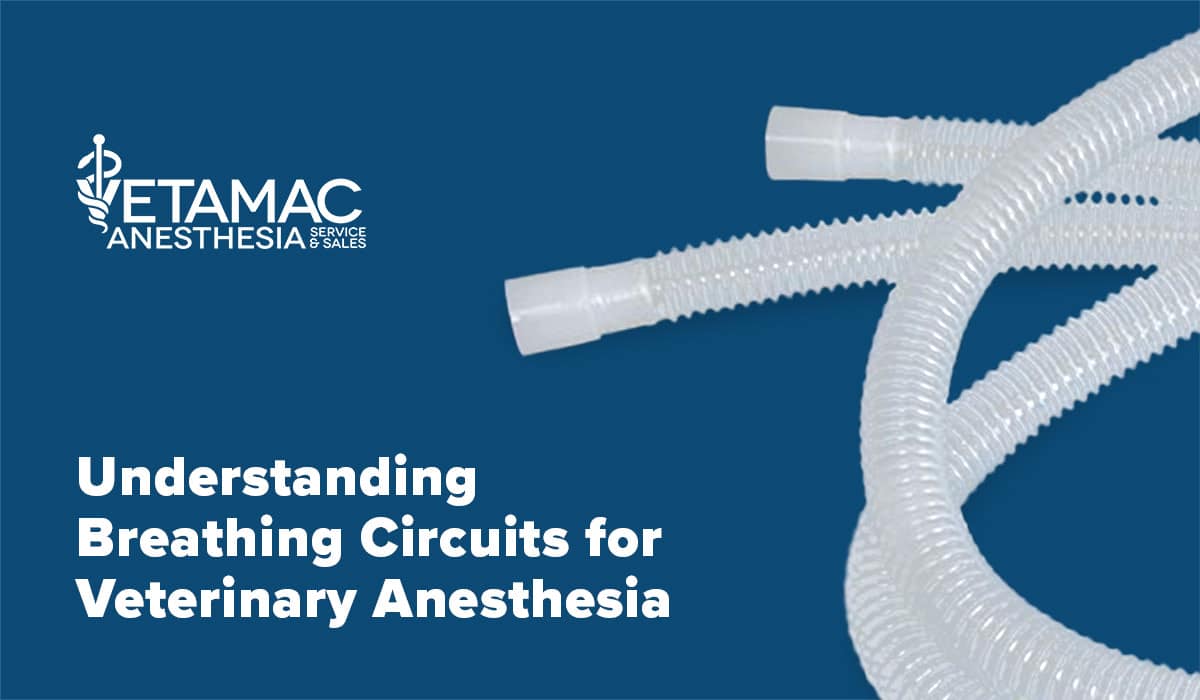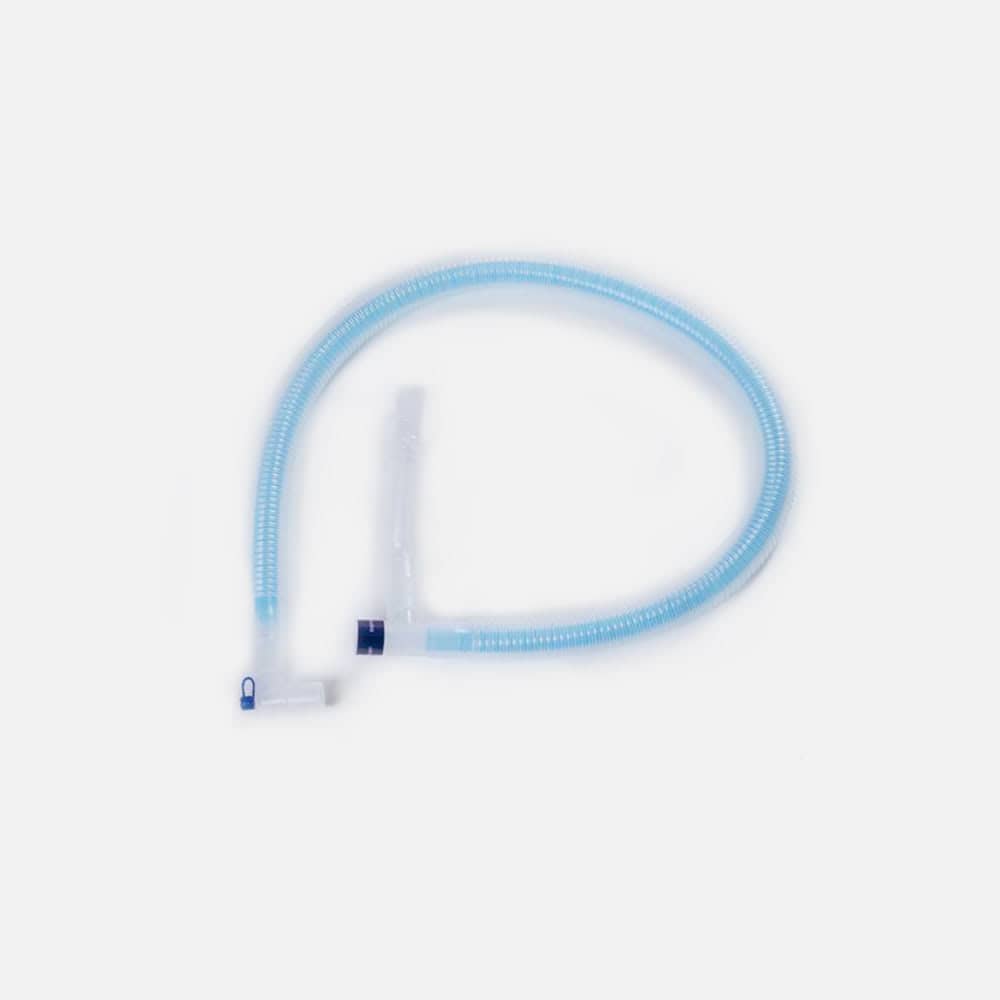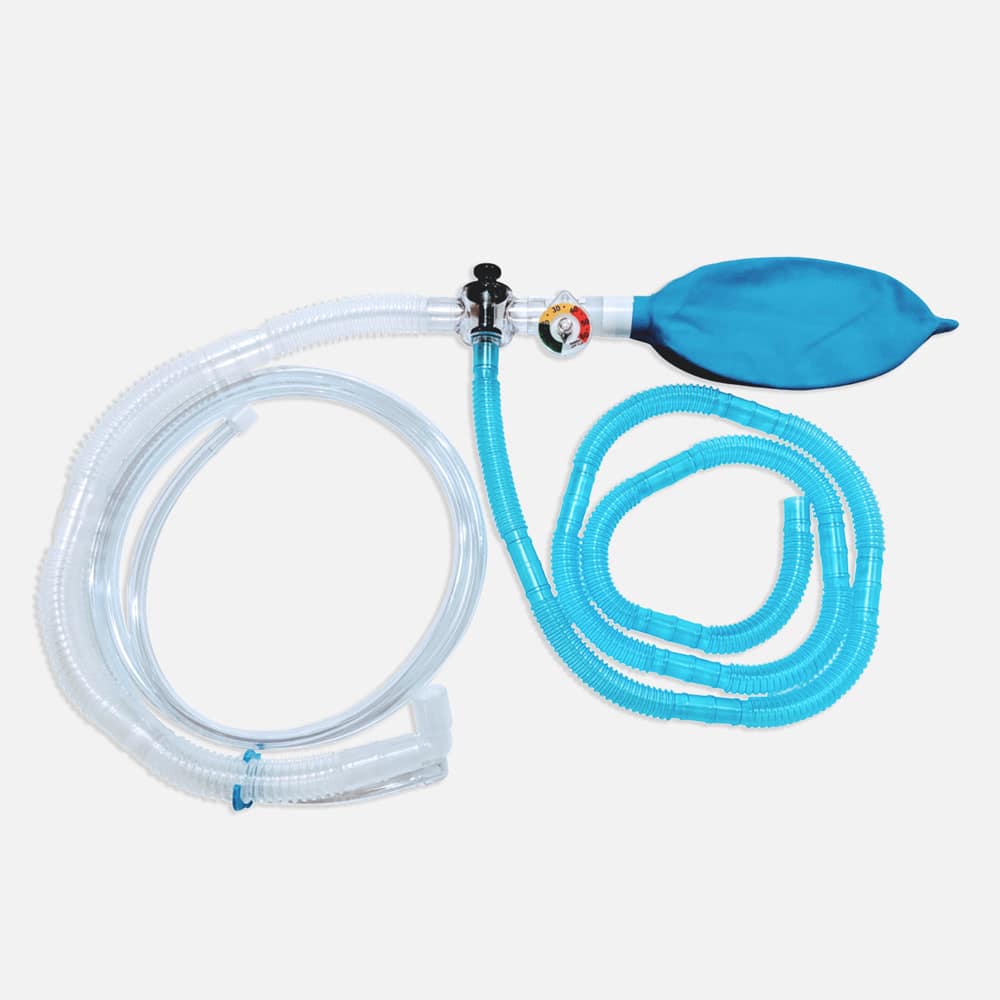Call Us
1 800 334-1583
Vol. IX: Understanding Breathing Circuits for Veterinary Anesthesia

In veterinary anesthesia, selecting the right breathing circuit is essential for effective patient management. In this edition of Vapors, we will explore various breathing circuits used in veterinary anesthesia, focusing on the Circle Rebreathing System and the Coaxial Rebreathing Circuit. Understanding the differences between these systems and their practical applications can help veterinary professionals provide the best care during surgery or procedures requiring anesthesia.
Circle Rebreathing System
The Circle Rebreathing System is a commonly used circuit that requires two tubes to carry gas to and from the patient. One tube connects to a port on the absorber, and the other connects to a Y-piece that attaches to the patient. The length of these tubes does not impact the amount of dead space due to the unidirectional flow of gas. There are even expandable tubes that can reach lengths of up to 72″. The only mechanical dead space present is from the Y-piece to the patient.
However, the length of the tubes does affect the volume of the system, which will be discussed in further detail. Proper understanding of system volume is critical for effective anesthesia management and patient ventilation.
Coaxial Breathing Circuits
Another important circuit in veterinary anesthesia is the Coaxial Rebreathing Circuit, also known as the uni-limb, universal, or F-circuit. This system also uses two tubes—one for inspired gas and another for expired gas. The inner tube carries the inspired gas, while the outer tube carries the expired gas. The primary benefits of coaxial circuits are their compactness at the patient end and improved heat and humidity retention, as the expired gas warms the inspired gas as it passes through the outer tube.
However, coaxial circuits come with a few challenges. The inner tube, which carries the inspired gas, is smaller, which increases resistance during inspiration. Additionally, some models may have issues with tube disconnection at the absorber end, or the patient end of the circuit may retract if the tube is stretched.
It’s important to note that the coaxial rebreathing circuit is often confused with the Bain non-rebreathing circuit. While both systems use two tubes, their functions differ. The coaxial circuit operates similarly to a traditional Y-tube and does not function as a Bain circuit. The details of non-rebreathing circuits will be covered in the next issue of Vapors.
Coaxial and Y-Tube Circuit Sizes
Both coaxial and Y-tube circuits are available in different sizes, including adult and pediatric options. Adult Y-tubes have a 22mm diameter, while pediatric versions are 15mm. Some suppliers offer a 12mm size for smaller patients. The adult coaxial circuit features a 19mm inner tube and a 30mm outer tube, while the pediatric circuit has a 15mm inner tube and a 25mm outer tube.
The size of the circuit affects two critical aspects of the system:
- Resistance to Breathing – Smaller tubes increase resistance, which can affect ventilation, especially in larger animals.
- System Volume – Larger circuits increase the overall volume of the system, affecting the time it takes to adjust anesthesia depth.
For example, in a 4.5kg patient with a tidal volume of 15cc/kg, each breath would be 68cc. The gas in the adult Y-tube would move approximately 1.75 marks, while the pediatric circuit would move around 3.4 marks. This means the adult circuit takes longer to deliver gas from the machine to the patient, which could delay changes in anesthesia depth.
Choosing the right circuit size is essential for providing optimal anesthesia management and ensuring patient comfort during the procedure.
Conclusion
The choice between a Circle Rebreathing System and a Coaxial Circuit, as well as selecting the appropriate size, is crucial for the effective management of anesthesia in veterinary patients. These decisions can impact the efficiency of ventilation and the ability to adjust the depth of anesthesia. In the next issue of Vapors, we will continue our discussion by examining non-rebreathing circuits.





